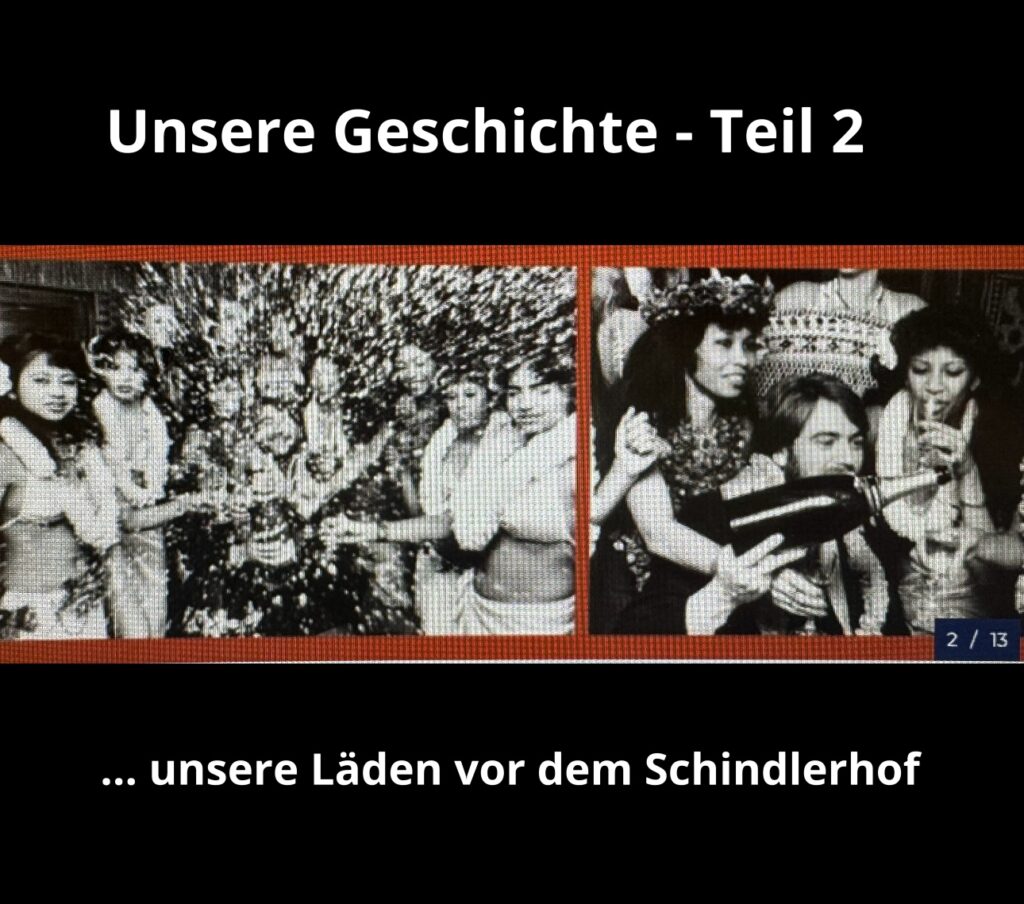
"Le Kilt", our fine little club disco.
During my time in London in 1968, I earned a whole "ten pounds clear a week", but lived for free in a hotel room with a roof terrace and a view of Trafalgar Square. (priceless today) I was also fed for free .
The weekly wage was spent every Saturday night in my favorite club for a few drinks.
Even today, I would find my way there blindfolded from Tottenham Court Road tube station:
"Le Kilt" - 60, Greek Street in Soho.
And in 1973 I already had a name and concept for my second start-up!
A long bar in mahogany with lots of brass, plus 50 casual seats in "Old English style" and a dark green, high-gloss lacquered entrance door that only opened after ringing the bell and looking through a peep window.
An oversized music system with mixing desk, two robust Thorens turntables, man-sized speakers from Klipsch and JB-Lansing from the USA. And for the first two quiet hours of the evening, the largest Teac tape recorder.
Now the unique selling point was the music:
I regularly went to Paris and bought the hottest records in the "Fnac" and "Lido-Musique" on the Champs Elysee, which weren't even available in Germany yet.
Word got around quickly.
Scotch, bourbon, vodka and gin were usually ordered by the bottle by the regulars.
And there were lockable compartments for the opened bottles in case there was too much of a good thing for one evening...
"Prison St. Michel" in Erlangen and Nuremberg
Our "Crêperie Rennaise" was now bursting at the seams every night and we were soon able to expand a large vaulted cellar a few hundred meters away and move there. We now had over 100 seats and the monthly rent was already DM 3,100.
We were finally able to expand our range of dishes again. In the middle of the vault there was a charcoal grill about two square meters in size for lamb chops, steaks and lobster. (live from a vivier) There were a dozen coveted seats around the grill.
The side dishes came from a tiny production kitchen. In the winter months, we usually still had fresh oysters - creuses - from Brittany. Of course, we also continued to serve gallettes and crepes, which were part of our brand identity at the time.
Every evening, two wooden barrels of pilsner and dark beer from Neumarkter Lammsbräu were placed in front of the bar. Not all guests wanted to drink cider or wine. If the wooden barrels were not empty one evening, there was free beer from 01:00. Students in particular liked to take the opportunity for a free beer.
Another great success, which we repeated shortly afterwards at the foot of the castle in Nuremberg's Irrerstrasse with the exact same concept on two floors. Naturally in a listed old house, which we renovated at our own expense.
From the very first day, sales were a third higher than in Erlangen. When we opened the door at 7 p.m., there were always a dozen guests at the door, streaming to their reserved tables Half an hour before opening, the answering machine was checked, so that we were then - actually always - fully booked for the first occupancy. There were between three and four bookings every evening. That's how we achieved a turnover of around DM 90,000 per month. A lot of money at the prices of the time.
Kon Tiki
And yet another property was offered to us: Two old fishermen's houses in Nuremberg, directly on the Pegnitz in the lower Wörthstrasse.
The monthly rent already amounted to DM 4,300.
Here, we wanted a concept that matched the river. As we all know, there are no coincidences in life. One of our regular guests, John Jensen, a native Hawaiian, gave me the idea:
a Polynesian restaurant with two bars. Together with our architect Detlev Schneider, the three of us flew to Honolulu to spend a whole month buying everything we needed for it and what we couldn't buy here: huge conch shells as washbasins, tapa bark from the Fiji Islands instead of wallpaper, tiki torches - large gas torches that illuminated the terrace and Pegnitz in the dark, several two-meter-high tikis, wooden deities carved by the inmates in the state prison on the Big Island.
We flew back and forth between the islands several times with Aloha Airlines until we had two large overseas containers together; half the interior!
We were able to win over a Hawaiian chef in Honolulu. When we picked him up at Nuremberg airport together with a journalist from Nürnberger Nachrichten, he was holding a surfboard under his arm. He wanted to spend his days off surfing in Spain. Americans think in different distances than we do.
Our cook was supported by two Hawaiian US-GIs, who made Won Ton (stuffed dumplings) for us at home.
Instead of wine and beer, we now sold almost exclusively cocktails: mai tais, Singapore slings, pina coladas, daiquiris and zombies.
We imported exotic seafood such as soft crabs and the local fish mahi-mahi ourselves, freshly packed on dry ice, with the help of Quantas Airlines. We had set up a revolving letter of credit with our bank, i.e. the goods were paid for as soon as the plane had taken off.
The Kon-Tiki was our biggest success to date.
We sold it back in 1981 because we had something new "in the pipeline" since 1979...




